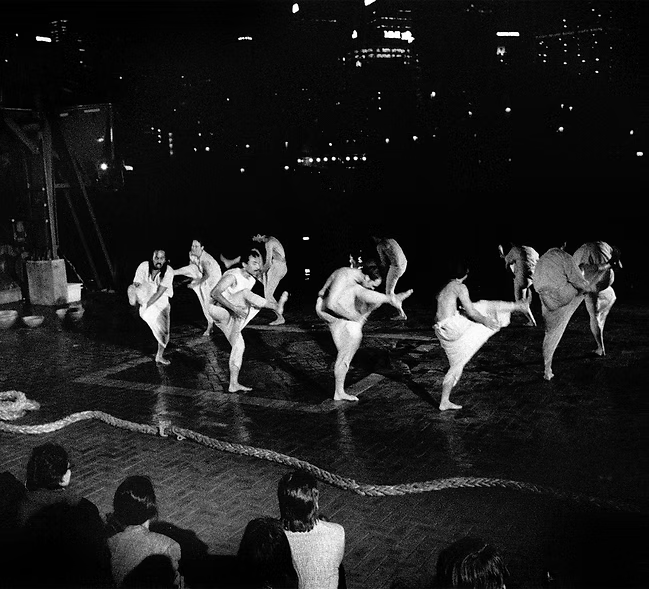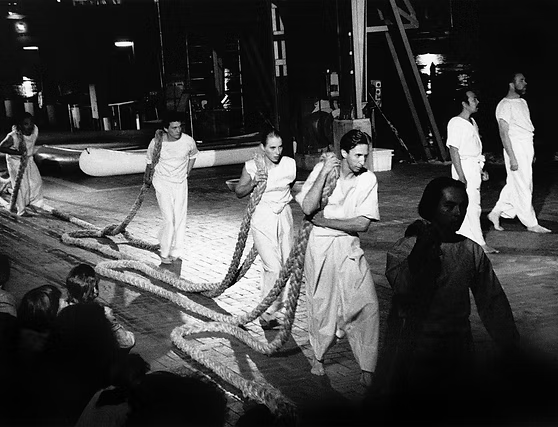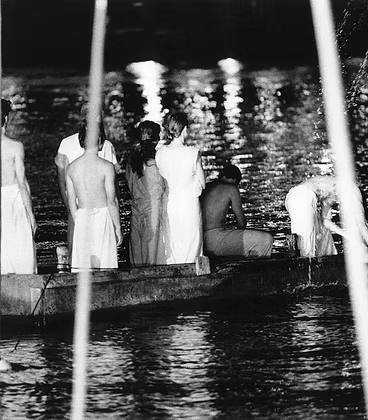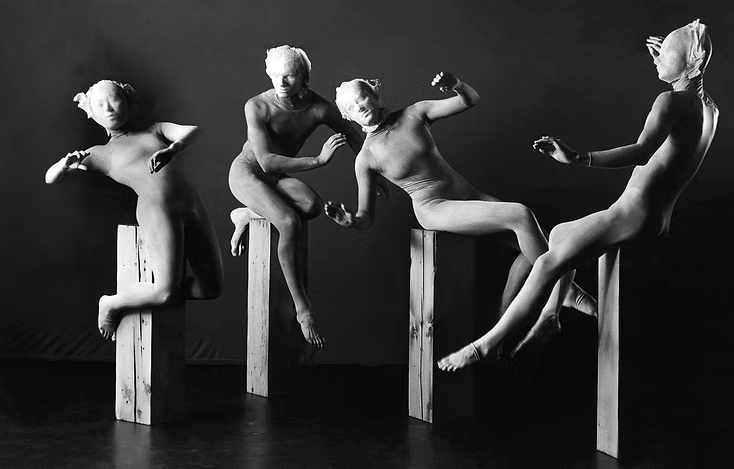
Images held in the Entr’acte Archives
Photographer: David Bishop
Flooding in a university’s archive room prompted the cataloguing of Entr’acte’s extensive performance and teaching resources that began in 2016. Elisabeth recalled the detailed research into ideas and practices from other continents that informed each Entr’acte production: in “Refractions” it was the creativity of early 20th century Germany Bauhaus; in “Ostraka” Marguerite Youcenar’s modern French writing on Clytemnestra led to characters and choruses in Greek myths; in “Waterborne” it was ways of moving and music-making in Indonesia, prompted by cultural exchanges and collaborations; in “Eclipse” the creatives discussed how Noh theatre from 14thC Japan might provide clues to representing an unseen body on stage.
The process sharpened the author’s focus on the global repercussions of a French theatre school founded in 1923. This prompted further research into the theoretical underpinnings of l’École du Vieux Colombier and the socio-political context that shaped its development. Elisabeth saw that the body poetics she had focused on in her working-life had a more complex past than she had imagined as a younger woman.
Influence of research on Embodied Thinking
The opening letters from Elisabeth to Bing, Decroux and Hébert explore the antecedents of physical forms adapted by the l’École du Vieux Colombier. For example, all structured exercises taken today, including yoga, originated in the military. In 1923 France, all youth had to study the Lieutenant’s physical culture classes as part of nation-building, despite Hébert’s distaste for cadet programs and their use in citizen control. He held the conviction that training enabled skills acquisition and, by extension, personal freedom. While there are some records of artistic research and performances during the rise of fascism from the 1930s to the Second World War, little is written about how each of the protagonists (Bing was born a Jew) coped with living under the Pétain puppet government.
The letter form, chosen for its intimacy, was prompted by Edmund de Waal’s writing (Letters to Camondo and The Hare with Amber Eyes). Well researched, both his books share stories about members of his Jewish forebears and associates filtered through intimate letters. This model enabled Elisabeth to address important historical topics in a non-academic style.
These letters are like calligraphic brushstrokes. They arc from Australia to France across a century, between the writer and three ‘living presences’ long departed from this world.
Waterborne (1993)



Photographer: David Bishop
Images held in the Entr’acte Archives
The Biennale of Sydney in a letter to ANMM
Congratulations on an absolutely wonderful evening…I think your vision and idea of Entr’acte in the Museum and Darling Harbour space was exciting and obviously worked very well. The media review was good and the opening audience was obviously enthralled by the outstanding spaces.
Head, Dance Dept. UWS in a letter to Entr’acte
Congratulations to Entr’acte for the performance of Waterborne at the ANMM. It was fascinating to see the company’s manipulation of the space and images relating to maritime themes. I commend your taking this opportunity to present performance in non-traditional spaces.”
Timescape (1986)


Photographer: Regis Lansac
Images held in the Entr’acte Archives
Paul McGillick, Financial Review, June 13, 1986
…the images – have all the richness of archetypal dreams, reinforced by the five performers…this is a rich work built up from movement, sound and projected slides. It succeeds in creating an Einsteinian picture of time. Its strengths lie in the way the performers’ movements communicate directly to us.